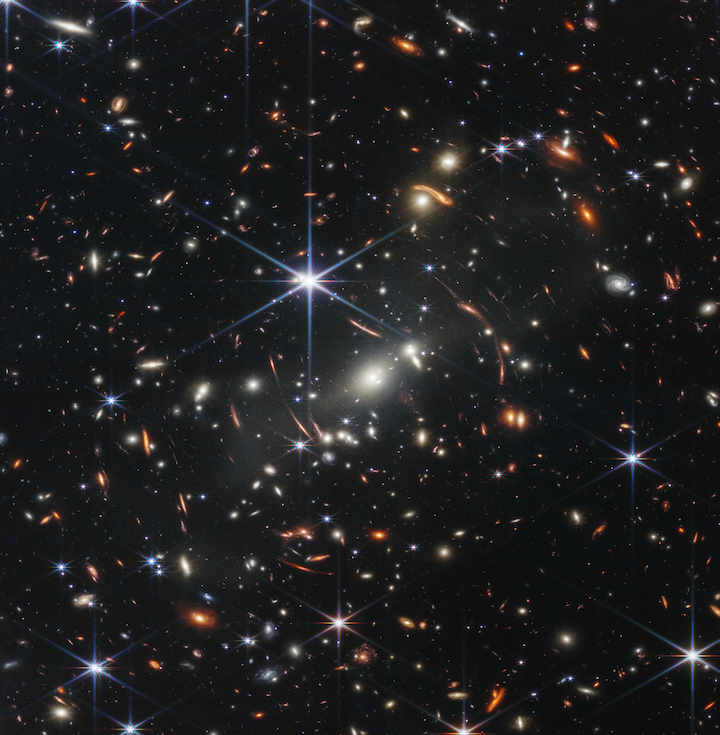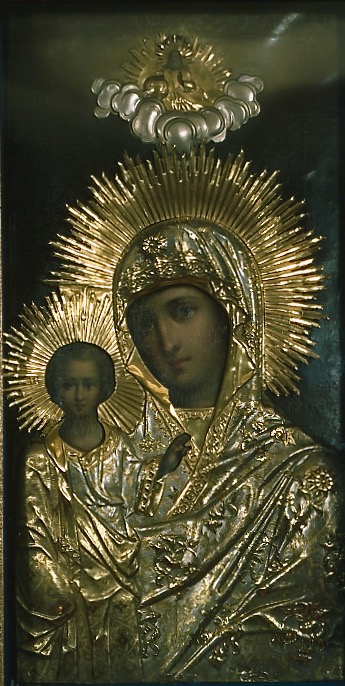Many of us have seen the amazing new pictures from the James Webb Telescope that show hundreds of galaxies billions of light years away, many of which we didn’t previously know existed. Looking at these pictures and reflecting on the vastness of the universe can make you feel very small.
It doesn’t help much to turn your gaze in the other direction, to the quantum realm, which is similarly fascinating and similarly confounding. The amazing array of sub-atomic particles and the sublime complexity of their interactions can also make you feel small, even though these are some of the smallest realities known to us. Reality is just so. . .amazing. It’s supremely beautiful and yet terrifying at the same time.
Christians have always understood that we are very small in the scope of things. “What is man that you are mindful of him?” asks the Psalmist. In the Ptolemaic vision of the cosmos that Dante inherited, our earth is at the center of material things, but the “center” is the lowest point. The devil is at the absolute center. Everything else is “above,” and the beings who exist above are more intelligent and see more than we do. It was only a gift of the transcendent God that man was made “a little less than the angels.”
As we have increased our ability to scope out more things both big and small, we have discovered just how much bigger and smaller things are than we thought. Oddly, this sometimes leads to an increase in human arrogance, as though we were masters of the universe. But what these pictures should do is puncture the illusion of human domination. We haven’t even begun to plumb the height and depths of reality.
It’s amazing, though, that we can know any of this. Just imagine: we are now glimpsing galaxies that are billions upon billions of light years away. We are seeing a museum of cosmic life. Some of those galaxies may be long gone. The light from them has been traveling for billions of years. If we could see them with a God’s eye view, they would look different, if they still exist at all.
But let’s consider for a moment that “God’s eye view” — the view of the One who is the Source of All Being and Goodness, who not only created those galaxies and all the laws of physics that govern them and all the atoms and quarks in them and who keeps them continually in being.
Think: what would it be like to share in that God’s eye view? What would it be like to share in the Beatific Vision? Every atom and quark in every galaxy and the nature of every bit of “Dark Matter” would now be apparent to you. God sees all in an instant, because He is keeping everything in being at every moment.
When you realize how vast the universe is in all its tiny, interrelated parts, and if you believe that God keeps it all in mind all at once, you come to the disturbing conclusion that the difference in intelligence between us and a slug is nothing compared to the difference between us and God. God loves us, but let’s not be too cocky.

When we consider the vastness of the universe, it can make us feel like the smallest particle in a vast ocean. People wonder: Can God take care of me? There’s so much going on, so many billions of people with so many problems, and I am so small.
Well, for Christians, there are two clues about this. First, if God can make all those billions upon billions of galaxies with untold trillions upon trillions of quarks, leptons, and neutrinos, and keep administering all of it at every moment, then I suppose He can probably take care of a few billion people on earth and still deal with your problems.
But would He? If He is so big, so vast, and so powerful, why would He care about this one, tiny individual on a nowhere planet? This is where the Incarnation comes in.
The scandalous particularity of the Incarnation is precisely the idea that salvation depends on one man at one moment in history, which makes the fate of the universe seem as though it’s balanced on the head of pin. In that one man, we claim, is embodied the Love that created the entire universe. You and I are made in His image. Just a meaningless particle in a vast ocean of nothingness? Or an invaluable instrument of an infinite Love?
Christianity involves an undeniable tension between the bigness of the God who creates the entire universe and the smallness and immediacy of the incarnate One who became a man at a single moment in history and suffered death on a cross to show His love for us.
These are like the two sides of a rope.
You pull too far in one direction to get a sense of the bigness of God, and you can lose your grasp of His presence as a single human person in history. Can something that big fit in a package this small?
But you can pull too hard in the other direction and lose your grasp on God’s bigness. We say, “Why doesn’t God do X?” as though our knowledge was broad and deep enough to understand God’s wisdom. It’s somewhat odd for people who have trouble figuring out what to make for dinner to imagine that they might know better than God how the cosmos ought to be run.
God is not just like us but bigger and smarter, like one of Marvel’s super aliens. God is in a different league. When you think you’ve got a sense of how big, take another look at those pictures and consider the vastness of the universe.
Then look at an icon of Christ and Mary. Keep those two together in your mind if you can. That’s the trick.

*Photo: Webb’s First Deep Field: the first full-color image released from the next-generation James Webb Space Telescope. [NASA, ESA, CSA, STScI, Webb ERO]
**Icon: Madonna and Child [Saint Michael’s Cathedral, Sitka, Alaska]
You may also enjoy:
+James V. Schall, S.J.’s Schall in Outer Space
James Matthew Wilson’s A New Theism?















